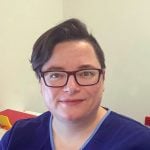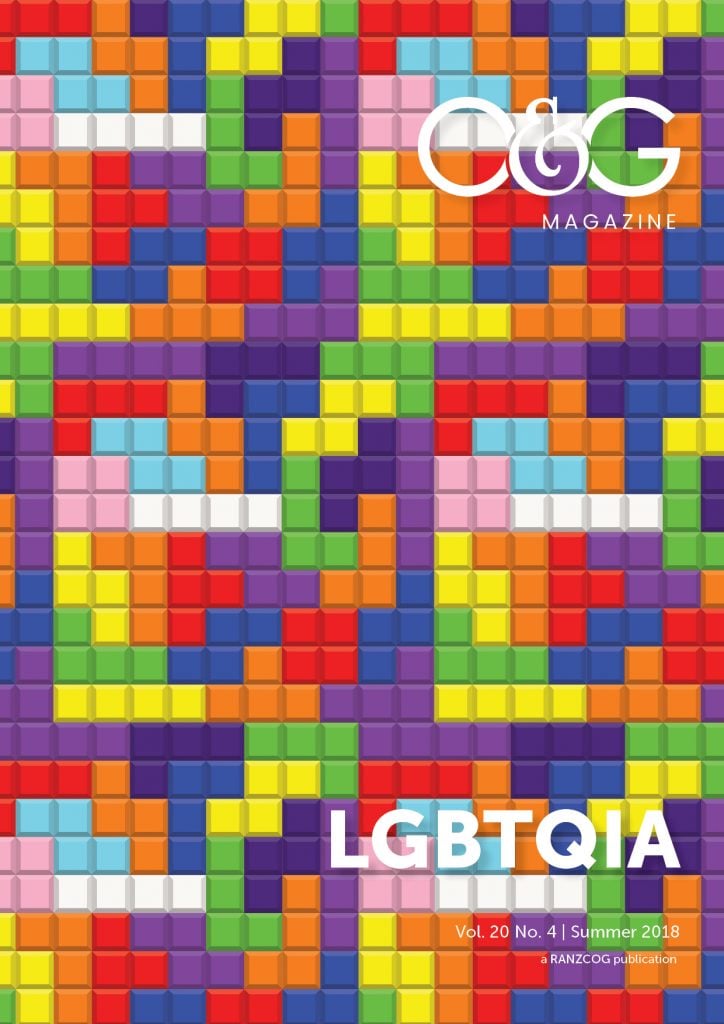For us, it all began with a Tinder-like database of men offering their genetic credentials like an Ikea catalogue. My partner and I had always intended to have a family together. We were lucky enough to find ourselves in the position of being financially stable and also be in a country where it is possible. Like many women in our position, the first and most difficult decision was how to find a donor.
The choice of known donor versus anonymous donor seems to be the most controversial topic when discussing rainbow IVF. We initially wanted to enlist the help of a good friend who was completely on board with being an uncle-like presence in our children’s lives (he still is), while also being conveniently in America, making it difficult for him to interfere in day-to-day parenting. Unfortunately, he was also inconveniently in America, and working for Walmart, which meant he wasn’t allowed consecutive weeks of leave to come and help a poor lesbian couple conceive. Unable to go with our first choice, my partner and I decided that we’d prefer an anonymous donor with open access at age 18. Australian law does not allow for non-contactable donors to be used. Many states have very strict laws that restrict donor access (Victoria will only allow donors that have been personally screened by the IVF clinic, leading to a very small pool of anonymous donors). For couples that don’t have an ideal candidate for a known donor, or don’t wish to involve a third party in their conception, this can limit their access to donors and choice. I know of more than one couple who have chosen to have IVF in another state for this very reason.
At the time we were planning our family, we were in Canberra, which was one of the few jurisdictions in Australia that allows access to foreign donor sperm and only through a single clinic (some NSW and QLD clinics also have access to foreign sperm banks). Conveniently, this was the clinic where our chosen IVF specialist worked. This is how my partner and I, sitting in bed at 9pm one night, found ourselves short-listing men on the strangest of criteria. I was particularly keen on choosing a good-looking gentleman (we were using him for his genes after all), and then refused several candidates on the basis that their favourite book was unreadable. My partner was more keen on their genetic provenance and height. In the end, both of us found the same donor as our top choice. He has now supplied us with two very beautiful children and we couldn’t be more grateful to him.
The process of starting IVF was very simple yet surreal. We were in the unique position that our IVF specialist was also a close friend, which made the journey incredibly smooth. Much of the surrealism came in the form of legal requirements that made little sense to us, but were mandatory. While many couples find the mandatory counselling regarding using donor gametes useful, to us it felt very targeted towards heterosexual couples using donor sperm. Nevertheless, our clinic was wonderfully supportive.
Following the birth of our first son in 2014, we decided that I too would undergo a cycle of IVF, with my partner as the gestational carrier. The privilege of having two uteruses was not lost on us. It was rather surprising, however, that within the bounds of a committed relationship where we already had a child together, I was required to legally donate my embryo to my partner so she could carry it. It was another example of, yet again, how the law could be very slightly out of step with the reality of situations. Frankly, it was disconcerting, not the least when my partner looked at my donation form and asked the IVF clinic if they had anyone better (she was kidding, I hope).
On the whole, our first two experiences with IVF were wonderful, inclusive and well supported. By the time we had decided to have a second child (sadly, my embryos were lousy quality due to endometriosis), we were living in Victoria. We had hoped to transfer our embryos down to the local IVF clinic and proceed with implantation here.
It was at this point that I realised our experience of inclusion may have been due to the ACT’s relatively open laws. Victoria, on the other hand, refused to allow our embryos into the state unless the IVF clinic had personally contacted the donor and counselled him. The very well-established clinic in the US obviously was not about to give up his details. It seemed a little ridiculous to counsel a man who had donated for many years and had at least three children across the world from his donations, including one already in my family. Rather than fight an expensive battle, we agreed it would be easier to travel to Canberra for embryo transfer.
Our second son was born earlier this year, with the same donor and mother as his brother. Our next shock came when his birth certificate registration was temporarily rejected. We were required to add a letter from his clinic stating that he was a child from donor gametes, that we were a couple and my partner was not a single woman. We found the unexpected letter rather jarring, having had to do no such thing the first time. Our clinic, once again wonderful, came through with a letter with no issues and we now have a birth certificate for bub number two.
Overall, our journey through IVF was very simple, but I have the luxury and privilege of being an O&G and of having made the journey with colleagues and friends. Having reached out across the wider community, the same stories do pop up continually as issues: partners being asked to provide blood samples due to legal requirements, while having no genetic link to the child; counselling targeting the use of IVF in relationships and how it can affect the relationship, especially using donor gametes, as though it were unexpected (I can assure you that no same-sex couple expects NOT to have to use a donor gamete to conceive); couples having to take a single offer of a donor with no choice, due to local laws; or needing to travel long distances to access services.
It is this ‘othering’ of our family-building process that tends to cause the most distress, the most angst. Having no flexibility in a system to adapt to different family blends and structures is what harms the most. In most of the IVF journeys I’ve heard about, a lot of these experiences of ‘othering’ happen beyond the IVF clinic. Same-sex couples using assisted reproductive technology (ART) are no longer a rarity and most clinics have experience. It is often the structures that precede and then proceed from there that throw up the most obstacles. GPs who refuse to refer same-sex couples for ART due to religious beliefs are more common than you would think. Referring to the female non-gestational partner as ‘the husband’ may seem harmless to many, and possibly even humorous to some, yet when juxtaposed against the myriad of struggles a same-sex couple has experienced simply to conceive, it is often heart-achingly insensitive. Hospital birthing classes that constantly refer to ‘blokes’ and infer that the gentle quiet love of the conception should be present in the birthing room are not only ‘othering’ all couples that use ART, but also those that may have conceived in the back seat of a Holden. I have been asked, more times than I can possibly count, how my sons were conceived and which donor we used and why. If you stop to consider those questions, they are intensely personal, and yet people will ask them with sincerity and curiosity.
It is this ‘othering’ that offends and distresses. It is the implication that one or two people, coming together to conceive a family in love, are different to any other family. I do understand that the laws are in place to protect children born of donor gametes, something I wholeheartedly support. There is definitely space for those laws to be a little more inclusive and a little less punitive in some states of Australia.
As a community, and as a profession, we too can make a difference to all of our patients, when we embrace inclusivity. Make no assumptions and you will make fewer mistakes. If you strive to give your rainbow couples the same pathway to family that we had, then you will be adding to a growing group of very happy people, who do talk to each other and make referral suggestions. In the end, making families is what ART is all about and families come in all shapes and sizes.






Thank you Sarah
This is beautifully written and your story will help others and us (midwives and Obs) to provide more sensitive care
Ps we miss you in Canberra